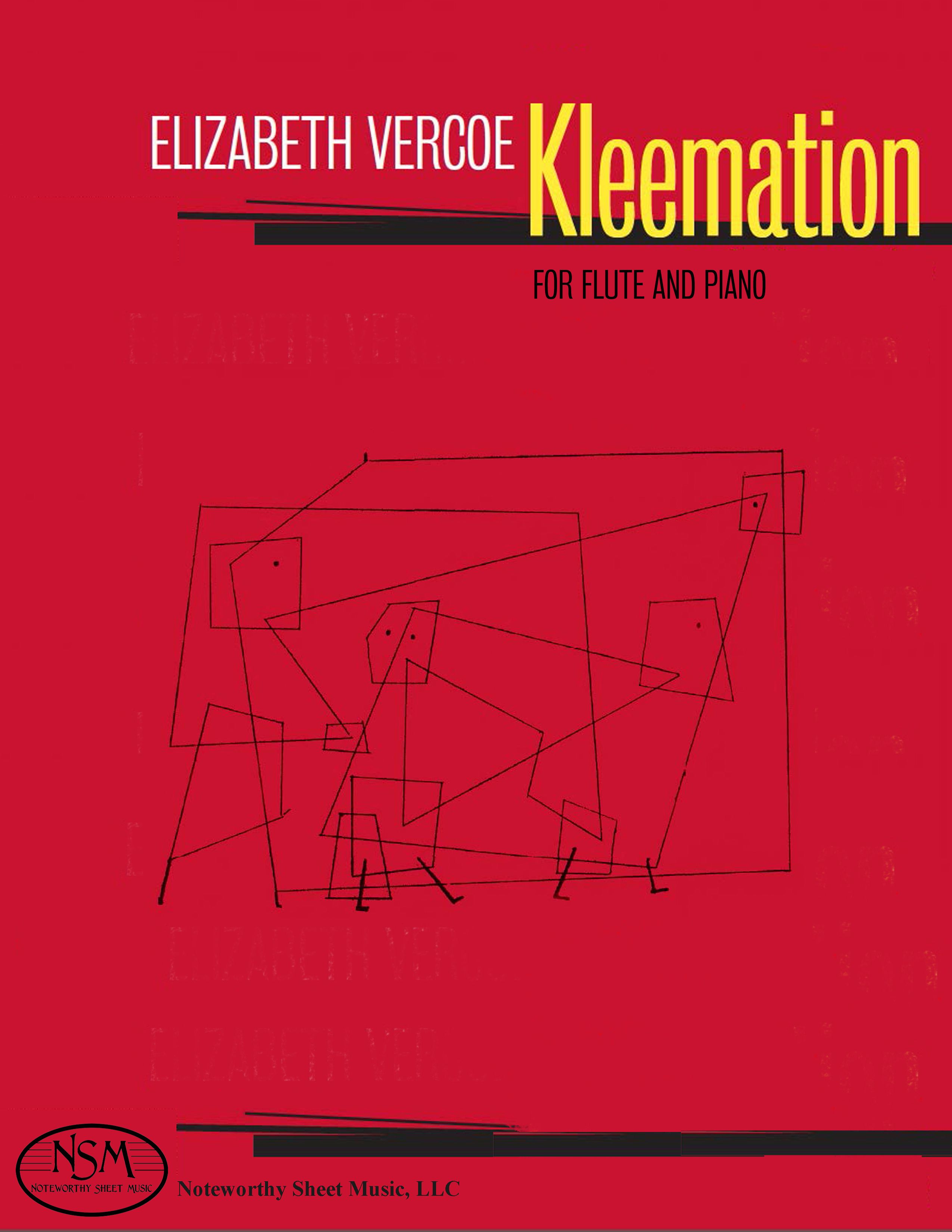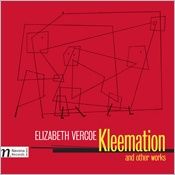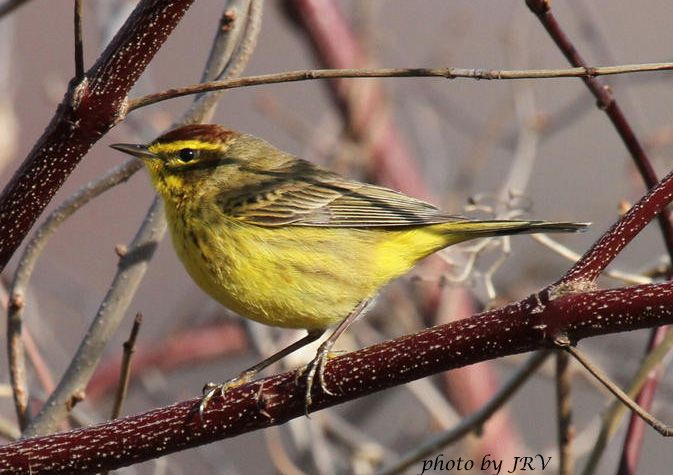piano
Vercoe – Kleemation – Flute & Piano
 Kleemation, by Elizabeth Vercoe
Kleemation, by Elizabeth Vercoe
Original Composition for Flute and Piano
Flute Part and Piano Score, PDF $16.95
Kleemation for flute and piano is in five short movements based on five drawings by Paul Klee titled: Goodbye to You, Please!, Afraid on the Beach, More Will Be Marching Soon, and Woman Sowing Weeds. Described as "highly abstract yet accessible," the piece was commissioned by Austin Peay University in Tennessee and received its premiere there in 2003. The New England premiere was at the Duxbury Art Museum in 2004 by the duo "2" (flutist Peter H. Bloom and pianist Mary Jane Rupert). "2" has since performed the piece on tours in the U.S., Thailand, Australia, and New Zealand. Click to read a testimonial to Elizabeth Vercoe's composition Kleemation written by Mr. Bloom. 
Kleemation was recorded by "2" and can be heard on the PARMA Recordings all-Vercoe CD entitled Kleemation and Other Works by Elizabeth Vercoe. In an IAWM Journal CD review Dr. Laura G. Kafkawrites: “Vercoe musically renders Klee’s drawings with all the humor, fear, and reality that make each one leap from its canvas and dance.” Click to read Dr. Kafka’s full review. In another review published by Audiophile Audition magazine on September 26, 2013, Lee Passarella writes: "Vercoe (b. 1941) also shows a willingness to adapt different musical styles and elements to her basic idiom: the essential atonality of her music is leavened with some well-chosen pop influences where appropriate to the subject matter at hand. That includes Kleemation, a work based on drawings by Swiss modernist painter Paul Klee. Klee's sometimes whimsical, sometimes troubling art turns for its inspiration to the uninhibited world of the child artist."
Listen to an audio sample of Kleemation![]() from the opening of the title piece.
from the opening of the title piece.
Piano score, 27 pages; Flute part, 11 pages; Total, 44 pages; PDF $16.95.
PreviewWalckiers - Fantaisie pour la Flûte - Fl & Pf
 Fantaisie pour la Flûte, Op.65, by Eugène Walckiers
Fantaisie pour la Flûte, Op.65, by Eugène Walckiers
Gassett Collection - Facsimile Edition by C.A.Vater/Noteworthy Sheet Music, with a Foreword by Peter H. Bloom
Flute Part and Piano Score, PDF $19.50
A student of Jean-Louis Tulou, Eugène Walckiers (1793-1866) was a flutist and an exceptionally talented composer. His Fantaisie pour la Flûte Sur la Ronde du Postillon de Lonjumeau is a delightfully engaging and challenging work based on emblematic material from the comic opera by the French composer Adolphe Adam (1803-1856). The famous Ronde du postillon appears at the end of Act I of Le Postillon de Lonjumeau (The Coachman of Lonjumeau), which premiered in Paris in 1836.
For additional information about the Gassett Collection, please see see our article An Introduction to the Gassett Collection.
Piano score, 19 pages; Flute part, 8 pages; Total, 32 pages.
Preview